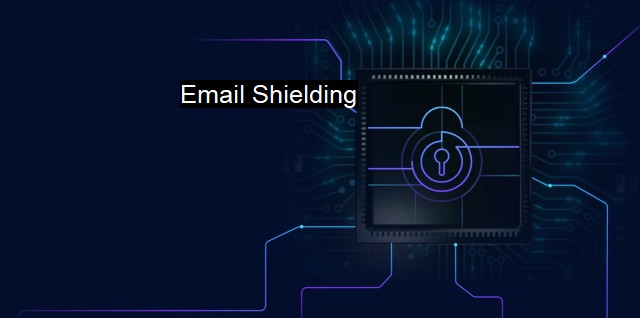What is Email Shielding?
Reinforcing Cybersecurity: Discovering the Potential of Email Shielding in Antivirus Protection
Email Shielding is a critical cybersecurity function primarily focused on safeguarding users against harmful content in emails. This operation is an element of extensive antivirus and cybersecurity services provided by multiple security providers in today's digitally dominated landscape. A tool designed to provide a safer environment for email users, Email Shielding helps users identify and isolate potential threats before they can compromise the system.Email Shielding operates as an alarm system that detects undesirable or dangerous content by scanning the inbound emails in real-time. This functionality is an outcome of combining advanced artificial intelligence with intricate algorithms that effectively recognize harmful components. These could range from malware, spam, phishing attempts to more sophisticated attacks such as ransomware, which are modern-day catastrophes in the digital realm.
The intriguing facet regarding Email Shielding is that the defense chamber does not restrict its operations solely within the emails' content. It meticulously dissects every element associated with an email- right from the sender's information, attachments, to the links incorporated within the message body. Thus the term 'shielding' justifies the comprehensive cover offered by this instrument against potential email-based cyber threats.
In detail, the process may involve the system, first filtering the traffic to identify spam emails that often harbor potential threats such as malware. They are known for their disguises, usually masquerading as a legitimate email, which inadvertently prompts the user to click a harmful link or download a virus-infected attachment. Following the upfront filtering, the system examines the email body and its attachments for potential malicious codes that could activate upon opening. Should the system flag an email as harmful, it either blocks it or moves it to spam, thus limiting potential damage.
Email Shielding also warrants the scrutiny of embedded links, emails masquerading their source address, or emails intending to deceive users into disclosing their sensitive information, typically known as Phishing attempts. Phishing is a prevalent and dangerous threat, with perpetrators constantly refining their strategies to outwit defense systems. An effective Email Shield is designed to evolve with these tactics, safeguarding users against falling prey to these threats.
A robust antivirus program typically incorporates Email Shielding as an essential aspect of its protective layering. Since most targeted attacks originate from emails, an effective Email Shield is non-negotiable for robust protection in any cybersecurity platform. Recognized for providing foolproof security, Email Shield is a preferred strategy adopted by organizations across the world to secure their communication channels. Enterprises respect the blend of resilience, adaptability, and extensive coverage offered by Email Shielding to tackle the evolving dynamics of cyber threats.
The vigilance and security provided by an Email Shield contribute to an overall reduction in digital vulnerabilities. It not only buttresses the system's capacity to confront imminent intrusions but also fosters cybersecurity awareness among users. It prompts individuals and organizations to be mindful and cautious while interacting with suspicious emails.
The synergistic effect of Email Shielding with other antivirus tools significantly intensifies the protection provided to users. It functions as a part of integrated security software, orchestrating harmoniously with fellow system defenders like firewall protections, heuristic detection methods, real-time scanning, and other cybersecurity mechanisms.
The context of cybersecurity and antivirus holds Email Shielding in high regard owing to its capabilities and the scope of its protection. Depicting simplicity yet imparting a solid defense against adversities, Email Shielding stands as a testament to how early identification and strategic alacrity can effectively prevent most cyber attacks. Streamlining the onslaught of incoming emails, reducing clutter, protecting sensitive personal and financial information, and actively combating phishing attacks, malware, and ransomware make Email Shielding an indispensable element of cybersecurity.

Email Shielding FAQs
What is email shielding and how does it work?
Email shielding is a cybersecurity technique that helps protect users from email-based threats such as phishing, spam, and malware. It works by creating an encrypted barrier between an email sender and receiver, preventing unauthorized access to email content and preventing spam messages from reaching your inbox.What are the benefits of using email shielding?
Email shielding provides several benefits, including protection against phishing attacks, spam, and malware. It helps keep your sensitive information secure by preventing unauthorized access to your emails. Additionally, email shielding can help improve productivity by reducing the amount of time spent sifting through unwanted emails.Can email shielding prevent all email-based threats?
While email shielding can help reduce the risk of email-based threats, such as phishing emails, it may not prevent all types of attacks. For example, email shielding may not be effective against social engineering tactics, such as convincing users to reveal login credentials or sensitive information. It is important to have additional security measures in place to prevent these types of attacks.How can I implement email shielding for my organization?
There are several email shielding solutions available on the market, ranging from cloud-based services to on-premise software. It is important to evaluate your organization's needs and budget to determine the best solution. Additionally, implementing employee training programs to educate users on identifying and reporting suspicious emails can help increase the effectiveness of email shielding.| | A | | | B | | | C | | | D | | | E | | | F | | | G | | | H | | | I | | | J | | | K | | | L | | | M | |
| | N | | | O | | | P | | | Q | | | R | | | S | | | T | | | U | | | V | | | W | | | X | | | Y | | | Z | |
| | 1 | | | 2 | | | 3 | | | 4 | | | 7 | | | 8 | | |||||||